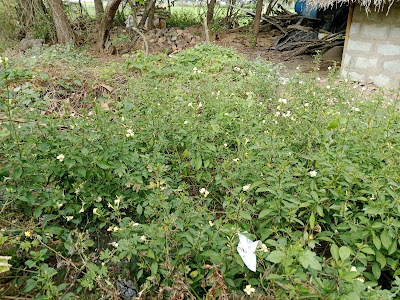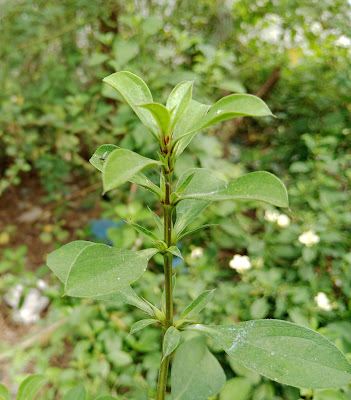Barleria prionitis, commonly known as Porcupine Flower or Vajradanti, is a species of flowering plant belonging to the family Acanthaceae. Here are some details about Barleria prionitis:
1. Botanical Classification:
- Kingdom: Plantae
- Division: Magnoliophyta (Angiosperms)
- Class: Magnoliopsida
- Order: Lamiales
- Family: Acanthaceae
- Genus: Barleria
- Species: prionitis
2. Common Names:
- Porcupine Flower
- Vajradanti
- Bluebell Barleria
3. Distribution:
- Barleria prionitis is native to India and is found in various parts of the Indian subcontinent.
- It has also been introduced and naturalized in other tropical regions.
4. Morphology:
- Barleria prionitis is a thorny, woody shrub that can grow up to 1-2 meters in height.
- The leaves are elliptical, opposite, and have a rough texture.
- The plant produces tubular, two-lipped flowers that are typically blue to violet in color.
- The fruits are small capsules containing seeds.
5. Traditional Uses:
- In traditional medicine, various parts of the plant, including leaves and roots, are used for medicinal purposes.
- It is believed to have anti-inflammatory and analgesic properties.
- The plant is used in Ayurveda for treating various ailments.
6. Cultural Significance:
- In some cultures, Barleria prionitis is considered sacred and is associated with religious ceremonies.
7. Habitat:
- Barleria prionitis is often found in disturbed areas, open forests, and along roadsides.
8. Ecological Impact:
- It is known to be invasive in some regions outside its native range.
9. Chemical Constituents:
- The plant contains various chemical compounds, including alkaloids, flavonoids, and saponins.
10. Propagation:
- Barleria prionitis can be propagated through seeds and cuttings.
11. Landscaping and Ornamental Use:
- The plant is sometimes cultivated for its attractive flowers and can be used in landscaping.
12. Conservation Status:
- The conservation status of Barleria prionitis is not specifically assessed, but it is not considered globally threatened.
Please note that while the information provided here is a general overview, specific details may vary, and it's always a good idea to consult local botanical resources for the most accurate and up-to-date information.







